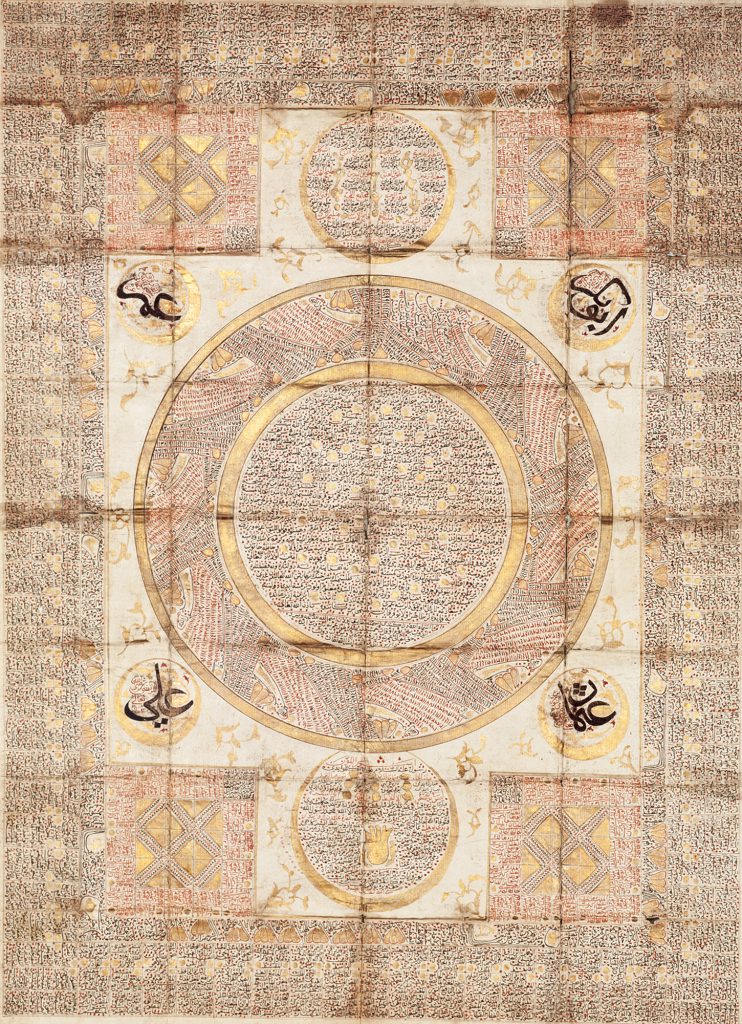



Title: Talismanic Chart with a Hilyah
Date: dated Rabi‘ al-awwal 1124 (April–May 1712)
Location: Istanbul, Turkey
Materials: coloured inks and gold on paper backed with green silk
Dimensions: 46 x 34.1cm
Accession Number: MSS 759
Other Notes:
The text includes a hilyah (hilye-i sherife) written in Arabic in the crescent at the top, with a translation in Ottoman Turkish in the crescent at the bottom around the ‘hand of Fatimah’. The central roundel contains reiterated claims for the hilyah’s talismanic value and has a border of panels filled with numbers, some of which give various of the ‘Ninety-nine Names of God’. Square panels at each corner and the border of the composition give Qur’anic verses, invocations of the Prophet and his Companions, and more of the ‘Ninety-nine Names’, in numerical or alphabetic form. This hilyah was a talisman, intended to be folded and placed in an amulet case. It was to gain the release of hostages and give protection against accidents and disease.
Script:
written in naskh and thulth scripts
Bibliography:
N.F. Safwat, The Art of the Pen. Calligraphy of the 14th to 20th Centuries, The Nasser D. Khalili Collection of Islamic Art, volume V, London 1996, cat.27, pp.52–3.
F. Maddison and E. Savage-Smith, Scinece, Tools and Magic, Nasser D. Khalili Collection of Islamic Art, vol XII, Part One, London 1997, cat.43, pp.108–9.
J.M. Rogers, The Arts of Islam. Masterpieces from the Khalili Collection, London 2010, cat.280, pp.244–5.
Zoom
Close

Create your own collection of artworks that you can print or save as a PDF. Please enter you email to enable feature.
Small Flask | JLY 1075
Has been added to your collection.
TIP:
You can now access and view your collection from the main menu at any time.